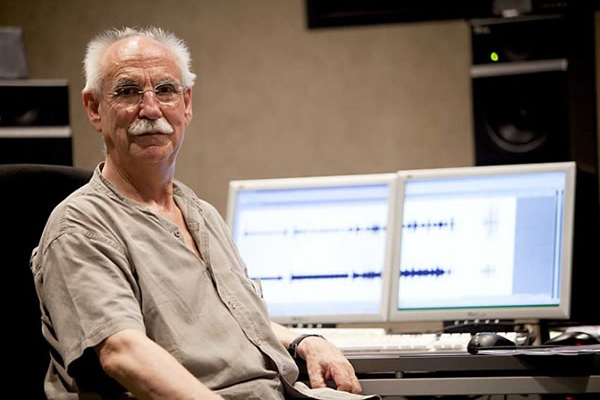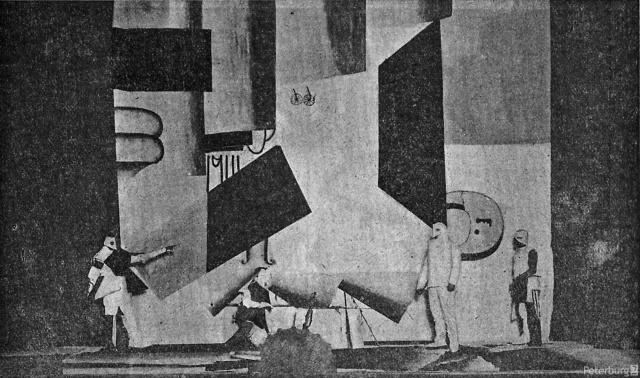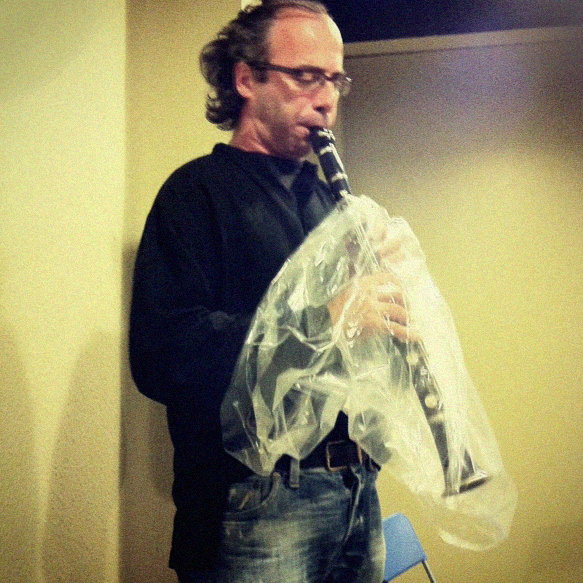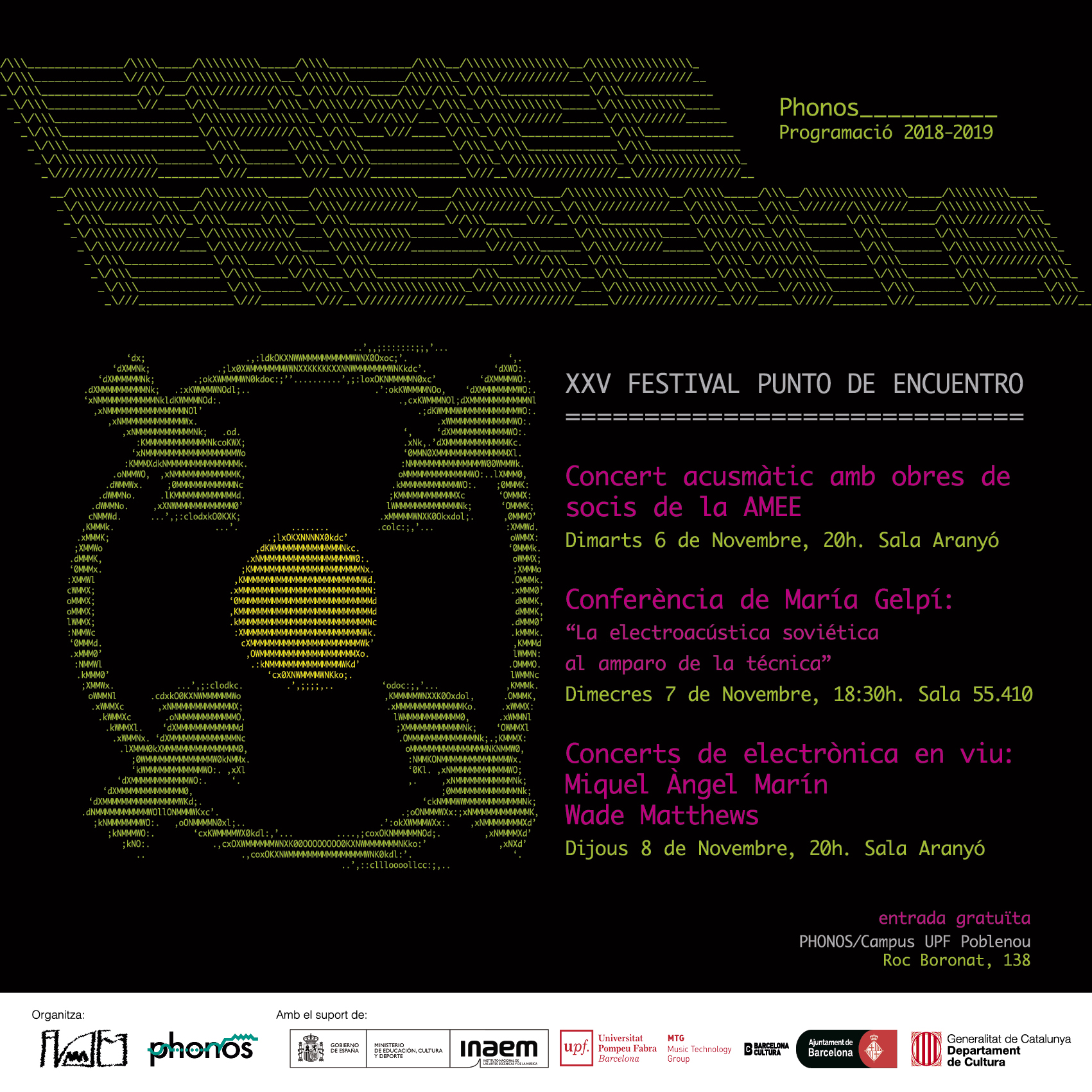XXV Festival Punto de Encuentro d'arts sonores i electroacùstica
Three activity sessions—November 6, 7 and 8, 2018—organized by the AMEE in collaboration with Phonos and the support of the Spanish National Institute for the Performing Arts and Music (INAEM). The first session (Sala Aranyó at 8 p.m.) presents a program of multi-channel works by Ariadna Alsina, Gabriel Brncic, Mercè Capdevila, Oriol Graus, Pablo Fredes and Tempe Hernández. The second (Sala 51.100 at 6:30 p.m.) is a presentation by María Gelpí about Soviet electroacoustic techniques as an alternative to the canonical history of North-American and Central-European electronic music laboratories. The third session (Sala Aranyó at 8 p.m.) consists of a double concert: first, a concert for clarinet and action in which Miguel Àngel Marín will premier works by Isaac D. García, Diana Pérez-Custodio and Reyes Oteo; and second, an electroacoustic improvisation by Wade Matthews.
I. Programme of multi-channel works (Tuesday 6, 20:00, Sala Aranyó)
(sound diffusion: El Sindicato de Altavoces)
Gabriel Brncic & Carlos Gómez: Quodlibet XXIV, 2018, for violas, quadraphonic, dedicated to Bárbara Brncic (17')
Ariadna Alsina: Dis-Till-Action, 2012, electroacoustic quadraphonic version by the composer* (8')
Pablo Fredes: Meta sónica/Cromo sónico, 2018, electroacoustic octophonic version by the composer* (10')
Tempe Hernández: Impulso I, 2018, electroacoustic octophonic version by the composer* (4')
Mercè Capdevila & Roger Casas: Zona Rinxols d’Or, 2018, electroacoustic octophonic version by Oriol Graus* (9')
Oriol Graus-Ribas: Conversa, 2018, electroacoustic octophonic version by the composer* (11')
*World Premiere.

Gabriel Brncic (b. 1942 Santiago de Chile) is a composer and teacher of electroacoustic music and musical technology living in Barcelona since his exile from Buenos Aires in 1974. He was artistic director of the Phonos electroacoustic music laboratory in Barcelona since its founding in 1974, as well as associate professor at the Cabinet of Electroacoustic Music in Cuenca, since 1989. Brncic's work to foster the creation of various electronic and computer-music laboratories and as the teacher of various generations of composers has played a determinant role in the history of Spanish electroacoustic music. As a composer, he has been working on his Quodlibet series since 1967 to address the structure and form of instrumental and electroacoustic music and its challenges in the area of notation and performance. About version 11 of Quodlibet IV Brncic observed: "Several years after Quodlibet XIII for large string orchestra, which premiered in Madrid in 1988, I decided to make a Quodlibet for violas and play it myself. It did not take shape until 2012, when I had the pleasure of collaborating with composer Carlos Gómez, who handled the recordings. At his suggestion, and due to the peculiarities of the instruments employed, we made recordings of an 18th-century French viola and a 19th-century Italian one. Both parts constitute the work's polyphonic discourse. After a careful selection process, we established two recordings that convey the idea and contents of this Quodlibet."
Analyzing the writing of electroacoustic and instrumental music is also the job of Ariadna Alsina (b. 1980 Figueres), who combines work as a composer with research into the writing of time in mixed music (Université Paris 8, doctoral dissertation dir. by Makis Solomos and Alain Bonardi). Alsina studied in Barcelona with Gabriel Brncic, Eduard Resina and Luis Naon (ESMUC); in Paris with José Manuel López López, Horacio Vaggione, Christine Groult, Hèctor Parra and Martin Matalón since 2011; at Ircam and the Haute École de Musique de Genève with Pascal Dusapin, Luis Naón, Eric Daubresse and Michael Jarrell in 2015-2016. She also coordinated the Sons de Barcelona project at the Music Technology Group (Universitat Pompeu Fabra). Dis-Till-Action is inspired by different techniques and processes used in the distillation of liquids: mixture, steam, boiling point, concentration, volatile components, essence, determined pressure, changes in composition, extraction, condensation... Alsina's piece incorporates these ideas through studio recordings of objects and instruments.
Pablo Fredes is a Chilean composer trained in Paris since 2000 with Sergio Ortega (ENMP de Pantin), Christine Groult (DEM in electroacoustic music) and José Manuel López López (Paris 8). He has been living and working in Barcelona since 2005, where he obtained his Master's degree in musical composition and sound technologies (UPF). He has since taught at the Universitat Pompeu Fabra and Hangar. He directs the concert cycle El Sindicato de Altavoces at Phonos. Meta sónica/Cromo sónico, which he premiers in the present program, stems from a reflection on two opposing concepts of time (mechanical/disperse and continuous/interrupted) and the contrast between a sonic plane (a sort of vertex in which soft and hard sonorities interact) and a canto (between internal and external). In the present work, the plane and the canto constitute the sonic impulses that Fredes calls cromo. As he puts it: "Meta sónica: from some limit, in some interior. cromo sónico: any sheet of sound and singer here before us."
A recording of digitally processed concrète sounds makes up Impulso I, pre-premiered at Hangar (Barcelona) in a stereo version. This piece by Tempe Hernández (b. 1978 Buenos Aires) stems for his work in the UB's Master of sound Art program. Hernández is a sound artist working with installations and audiovisual media, thanks to the support of the MediaEstruch residency program and the collective installation, In a Silent Way (2018) at the Convent of San Agustí in Barcelona. He lives in Barcelona, where he works as a performer and composer, collaborating with the contemporary jazz group, Unexpected, and with the experimental music group Pampa Niwe.
Capdevila's piece, Zona Rinxols d'Or—co-created with Roger Casas—stems from a reflection on the possibility of interplanetary life. Its title is drawn from the term Goldilocks planet, which is astronomy's colloquial way of referring to a hypothetical exoplanet located at an inhabitable distance from a star. Mercè Capdevila (b. 1946 Barcelona) is an artist educated in l’escola Massana Barcelona and Kunsthandwerk Schule Pforzheim, electroacoustic musician educated in Phonos Barcelona and worked in the study of Aaron Copland from the University of New York at Queens College as a guest composer (1993-1994). She is one of the founders of AMEE (Spanish Association for Electroacoustic Music and Sound Art) in 1987. Between 1985 and 1989, she collaborated with composer Oriol Graus-Ribas on a series of concerts that combined lasers and electroacoustic music.
Oriol Graus (b. 1957 Barcelona) studied composition with Gabriel Brncic and computer music with Luis Callejo in Phonos. Like Capdevila y and Brncic, he is a founding member of the AMEE. He was also part of the traditional music group, Lahiez. Graus has worked with architect Sergi López-Grado on a series of musical projects designed to create urban soundscapes, including Camins d'aigua. His work reflects interest in applying certain compositional techniques drawn from electronics to instrumental music. About Conversa, the work he presents here, Graus observes: "Man with his understanding cannot know what the rain is saying when it falls upon the leaves of the trees or when it taps at the window panes. He cannot know what the breeze is saying to the flowers in the fields. But the Heart of Man can feel and grasp the meaning of these sounds that play upon his feelings. Eternal Wisdom often speaks to him in a mysterious language; Soul and Nature converse together, while Man stands speechless and bewildered." (Khalil Gibran). Very special thanks to Pilar Subirà and Wade Matthews for reading the text in this work.
II. Soviet Electroacoustics in the World of Technology, by María Gelpí (Wednesday 7, 18:30, Sala 55.410)

In this presentation, María Gelpí links the socio-political setting of Soviet Russia to the birth of electroacoustic practice as part of a state plan for industrialization during the first half of the 20th century. This relation reveals that the application of electronics to music took place largely outside the context of art, and was developed instead in the field of engineering technology—often in relation with the radio and film industry. In light of these circumstances, María Gelpí's presentation brings out the decisive role played by Soviet recording and listening laboratories in the experimentation and technical development of electroacoustic music.
The artistic manifestations and devices designed in that context will be studied here, including a variety of elements such as Boris Yankovsky's vibroexponator, the works of Avraámov, who developed the theory of ultrachromatism in his The Musical Science of the Future is a New Era in the History of Music, and premiered the Symphony of Sirens (1922), and the work of Yankovsky, whose essay Acoustic Synthesis of Musical Colors has yet to be published. Mention will also be made of Sholpo, whose 1917 essay, The Enemy of Music foreshadows the description of Yevgeny Mruzin's ANS synthesizer; of the Melograph patented by Sholpo in 1927, and of the works of Vertov, who abandoned his experiments with the human voice and made the first recordings of industrial machinery with cinematic recording technology designed by Shorin for the filming of Enthusiasm (1931), which can be considered a forerunner to Pierre Schaeffer's musique concrète.
This presentation not only offers an image of the specific creative developments in this field that took place in the USSR; it also underlines the importance of electronic laboratories for the development of work with sound and listening in experimental art practices, outside the canonic history of radio studios and electronic music laboratories in the United States and Central Europe after World War II.
III. Live-Electronics double programme (Thursday 8, 20:00, Sala Aranyó)
Part I: Works for clarinet and actions by Miquel Àngel Marín
Reyes Oteo: Los ratones, 2017, for clarinet and action* (6')
Diana Pérez Custodio: Jekyll & Hyde. Versión 3, 2017, for soprano and bass clarinets* (10')
Isaac Diego García: Sujeto, 2017, for clarinetist-performer* (10')
*World Premiere.
 La peça de Reyes Oteo (n. Sevilla, 1982) està basada en quatre poemes de Juan Gabriel Jiménez Cebrián, del seu llibre Naturalezas vivas. L'obra d'Oteo pren el soport d'una partitura dividida —a manera de la Divina Comèdia— en cants, en nombre de tres, amb el doble llenguatge: musical i textual, un contracant i una coda. L'estructura està marcada pel fil conductor de les melodies, si bé es deixa a l'intèrpret espais precisos per a la improvisació sobre les mateixes, a la respiració musical, a més del recitat dels textos. Al contracant que les segueix, el clarinetista realitza una improvisació sobre les tres melodies i finalitza amb un multifónic, sense permetre el silenci. (Notes de Rosario F. Cartes.).
La peça de Reyes Oteo (n. Sevilla, 1982) està basada en quatre poemes de Juan Gabriel Jiménez Cebrián, del seu llibre Naturalezas vivas. L'obra d'Oteo pren el soport d'una partitura dividida —a manera de la Divina Comèdia— en cants, en nombre de tres, amb el doble llenguatge: musical i textual, un contracant i una coda. L'estructura està marcada pel fil conductor de les melodies, si bé es deixa a l'intèrpret espais precisos per a la improvisació sobre les mateixes, a la respiració musical, a més del recitat dels textos. Al contracant que les segueix, el clarinetista realitza una improvisació sobre les tres melodies i finalitza amb un multifónic, sense permetre el silenci. (Notes de Rosario F. Cartes.).
Diana Pérez Custodio (n. Cádiz, 1970) ens ofereix les següents paraules de R. L. Stevenson a L'estrany cas del Dr. Jekyll i Mr. Hyde com a introducció a la seva peça: «Dia rere dia i des de les dues dimensions de la meva intel·ligència, la moral i la intel·lectual, em vaig anar acostant així cada vegada més a aquesta veritat pel parcial descobriment de la qual he estat condemnat a tan horrible naufragi: que l'home no és veritablement un, sinó veritablement dos. Dic dos, perquè l'estat actual del meu coneixement no em permet anar més enllà. Uns altres continuaran, uns altres arribaran més lluny que jo en el recorregut d'aquestes mateixes línies; i jo m'atreveixo a conjecturar que fet i fet se sabrà que l'home és una mera societat de múltiples habitants, incongruents i independents entre si».
Sujeto, l'obra d'Isaac Diego García (n. Madrid, 1978), reflexiona sobre la immersió del «jo» en l'ordre simbòlic. L'intèrpret-performer queda constituït, de manera metafòrica, com a subjecte («subjectat») en relació amb tots «els altres». La primera relació entre subjecte i objecte queda constatada per la presència de dos clarinets, que el defineixen com clarinetista (com a músic). El següent «un altre» ho formen les partitures transparents, que juguen una doble funció: d'una banda, tant el seu reflex en el vidre com la mirada del públic a través de la partitura, el defineixen com a cos (com a performer, com un «jo constituït» a través de la imatge, de la mirada). Pel que fa a l'aparent complexitat de l'escriptura (amb tots els seus nivells de representació), el subjecte no pot escapar de l'escriptura (el significant en un sentit ampli) com tampoc pot escapar del so que ho envolta (de la sala, del públic, etc.). Aquest material sonor, projectat cap a dins del triangle és el tercer «altre».
Part II: I am seeking, solo electroacoustic improvisations by Wade Matthews
Wade Matthews – Digital synthesis and real-time manipulation of field recordings. Of his improvisations, Wade Matthews (b. 1955 La Chapèlle-Saint Mesmin) observes: "Creating music at a specific moment and place is always a challenge, and doing so with a laptop computer —a technology that has little or nothing in common with our traditional concept of a musical instrument—does not make it any easier. But focusing on those difficulties likens the artist or musician to a sort of juggler or circus performer, when what really matters is what he or she creates, and how we experience that creation personally."
In his free electroacoustic improvisations, Matthews lives the here and now with an intensity that grows when he is able to share them with an audience that is, itself, a part of the moment and the place. Thus, the listeners not only share the experience of the music; with their presence and their attention, they directly influence the process of creation. The result is a music made here and now, a music that sounds the possibilities of the moment and place and asks no less of the listener. How will this concert be? We don't know yet. We only know that it will be unlike the previous and following ones.
Poster

